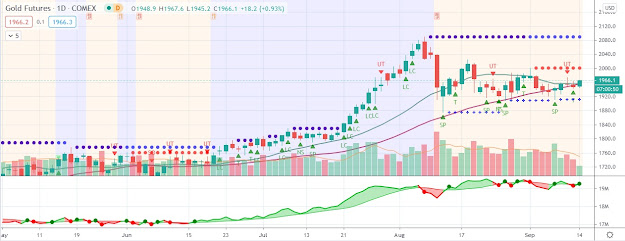Gold - extended its gains to $1,758 per ounce after the release of the November non-farm payrolls data
 The gold price added to its gains Friday following the latest U.S. jobs data. The price of gold was modestly higher prior to the report, but extended its gains to $1,758 per ounce after the release of the November non-farm payrolls data. At 120,000, the report came in slightly below the 125,000 consensus estimate among economists. However, the October and September reports were revised higher by a combined 72,000, and the unemployment rate dropped from 9.0% to 8.6% – its lowest level since March 2009. U.S. equity market futures climbed in addition to the gold price following the jobs report , with the S&P 500 contract up 1.3% at 1,259.90.
The gold price added to its gains Friday following the latest U.S. jobs data. The price of gold was modestly higher prior to the report, but extended its gains to $1,758 per ounce after the release of the November non-farm payrolls data. At 120,000, the report came in slightly below the 125,000 consensus estimate among economists. However, the October and September reports were revised higher by a combined 72,000, and the unemployment rate dropped from 9.0% to 8.6% – its lowest level since March 2009. U.S. equity market futures climbed in addition to the gold price following the jobs report , with the S&P 500 contract up 1.3% at 1,259.90.Gold shares held steady in concert with the price of gold, as the AMEX Gold Bugs Index (HUI) closed lower by 0.10 points at 584.68. Barrick Gold (ABX) and Goldcorp (GG), the sector’s two largest components, fell 0.1% and 0.3%, respectively. One notable gold producer moving higher was IAMGOLD(IAG), which advanced 1.1% to $20.41 per share after Credit Suisse initiated coverage on the Company with an Outperform rating and $25.00 target price.
The broader U.S. equity markets consolidated their gains from Wednesday as well, with the Dow Jones Industrial and S&P 500 Index closing lower by just 0.2% and 0.1%, respectively. The markets’ stability coincided with a mixed bag of economic data on Thursday. While weekly jobless claims of 402,000 missed the 393,000 consensus estimate among economists, the November ISM Manufacturing Index of 52.7% beat the 52.0% level expected.
Commenting on the outlook for the gold price in light of this week’s central bank intervention, UBS precious metals analyst Edel Tully wrote in a note to clients that “There is a twofold impact on gold from the joint policy response from central banks. First, a substantial increase in the demand for dollar swap facilities would mean further expansion of the Fed’s balance sheet, if lending is not sterilised, and would effectively be another form of easing. The downward pressure this puts on the dollar is clearly to gold’s benefit.”
“Second, to the extent that the cheapening of dollar funding costs limits the possibility of a liquidity crunch, it is also beneficial for gold,” Tully added. “We only need to look back to 2008 for a reminder that a dollar funding crisis is not gold’s friend.”



Comments
Post a Comment